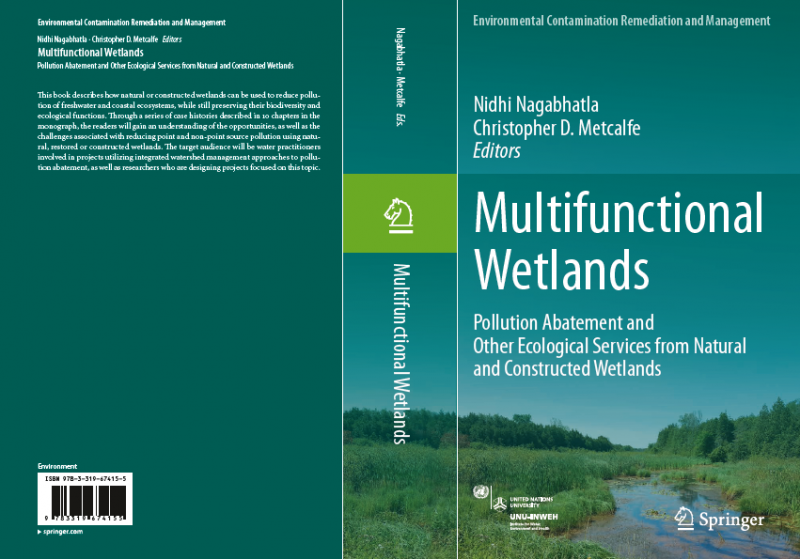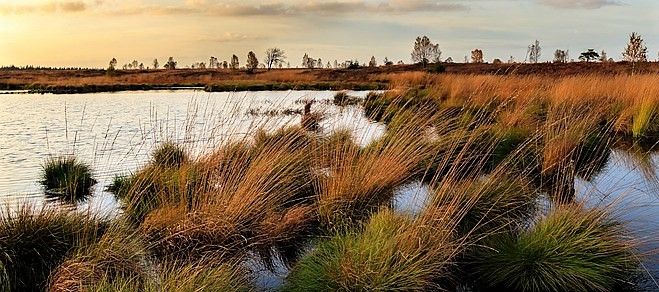Wetlands Experts See Nature-based Solutions (NBS) as a Smart Strategy for Sustainable Water Futures
Published on by Nidhi Nagabhatla, Senior Programme Officer at United Nations University in Academic
Blending with the theme of World Water Day, 2018 ‘Nature for Water' we are pleased to present the new book ‘Multi-functional Wetlands; Pollution Abatement and Other Ecological Services from Natural and Constructed Wetlands’, published in the Springer Environmental Contamination Remediation and Management Series.

This synthesis presents a range of perspectives and options that natural and constructed wetlands offer as sustainable solutions to deliver ecosystem services to urban and rural communities worldwide.
From the 1970s some 1000 RAMSAR wetlands shrunk to nearly half their areal spread, despite the fact than they were classified as protected. Balancing the use and conservation of these natural resources is a critical development issue.
The concept of Nature-based Solutions (NBS) gained importance in the global community as a practical tactic to address a range of multi-functional ecosystem issues. Their design is based on ecological functions and services that ‘ natural capital ’ can provide.
For natural and constructed wetlands they add value to ecosystems in pollution abatement, storm water management, habitat and biodiversity and waste water management. The book makes a strong case for mainstreaming NBS thinking in conservation and development action for aquatic ecosystems. It presents evidence in a series of case studies that demonstrate science, technology and the role that communities play in wetlands management.
Gaps and opportunities in policy and practice for wetlands management are discussed. The evidence presented in the book stresses the need for a sharper focus on protecting wetlands by employing an ecosystem services based understanding. NBS is a smart strategy that offers practical solutions to countries and natural resource planners. Natural and constructed wetland ecosystems are ideal test sites to design place-based or context-specific interventions (read more in Chapter 1 ).

The book’s presents a rich geographic and thematic diversity of wetland case studies, ranging from tropical coastal mangrove forests in the south to tundra wetlands in the upper north, and other urban, rural and remote regions in Canada, United States, India, Mexico, Nigeria, Cameroon and other locations.
The authors describe data and knowledge gaps in each case study. NBS potential for income and livelihood opportunity for communities, in urban and rural settings in Africa, is explained in Chapter 9- also, makes a clear argument on the gender aspects of implementing place based NBS strategies. There is pitch for a business case to employing a nature-based solutions approach for managing contemporary water challenges for water availability and supply, water quality recycle and reuse targets and risk stemming from extreme water-related extreme. Chapter 5 makes a case for future and long-term private and public sector investments in protecting and leveraging ecological services and benefits of wetlands – while making a strong claim to reposition the coastal wetlands mangroves as a productive NBS strategy to protect coastal cities and communities.
The book also presents experiences that contribute to an emerging body of ‘ new knowledge ’ that informs effective policy development, and for programs and to plan investment in the sector. The technical products and services discussed in the book’s case studies will benefit practitioners, researchers and water managers, to help them harness the benefits of aquatic ecosystems for sustainable development. Chapter 6 - T he Role of Constructed Wetlands in Creating Water Sensitive Cities’ - profiles how the smart use of wetlands contributes to a future vision of cities that are more livable, sustainable and resilient.
Initiating a discussion as to how various concepts and contexts relating to sustainable management of water resources apply to wetlands, the water security agenda provides for a ‘shared approach’, that includes value and knowledge systems, technical, infrastructure, social and political aspects that address water sector issues and SDG 6 to ensure access to clean water and sanitation and that serves as a foundation for achieving many of the other SDGs – such as- SDG 11 [ achieving sustainable urban development and ensuring that cities are offering the set of facilities linked with sustainable growth and wellbeing ].
The message - to recapitulate the larger incentives for countries to consider natural and constructed wetlands and aquatic ecosystems as a smart, cost effective and long term NBS tool – for ensuring the water security and sustainable water futures. This synthesis is timely. The year 2018 highlights long-term, ecologically-sensitive solutions aimed at making the 2030 Agenda2 a reality. World Wetlands Day (2 February) – “Wetlands for a Sustainable Urban Future" – stressed the need for broader understanding of the structure, functions, role and utility of wetlands in the deliberations on sustainable water futures. Also, the 2018 UN World Water Development Report - ‘Nature-based Solutions for Water’3 provides comprehensive information and data on the quantity, quality, distribution, use and management of the world's waters; and describes how NBS adds value to strategies for sustainable water management.
Nidhi Nagabhatla
United Nations University—Institute for Water, Environment and Health, Hamilton, ON, Canada
School of Geography and Earth Science, McMaster University, Hamilton, ON, Canada
Related Web links
- https://www.ramsar.org/
- https://sustainabledevelopment.un.org/sdg6
- http://www.unwater.org/publications/world-water-development-report-2018/
- https://www.undp.org/content/undp/en/home/sustainable-development-goals/goal-11-sustainable-cities-and-communities.html
- http://inweh.unu.edu/water-security-and-nexus/
Media
Taxonomy
- Water
- Water Resources
- Wetlands
- Greenhouse Gases
- Green Building
- Wetlands